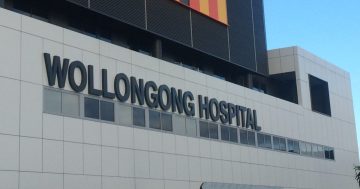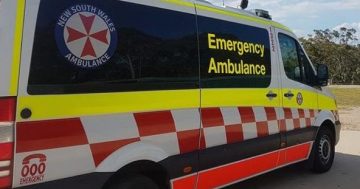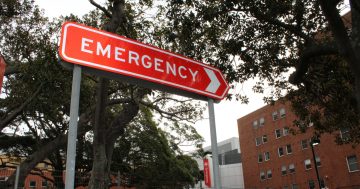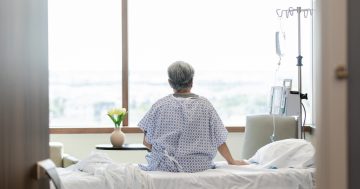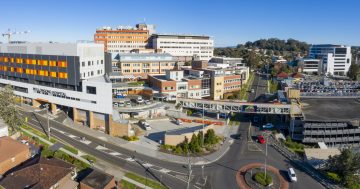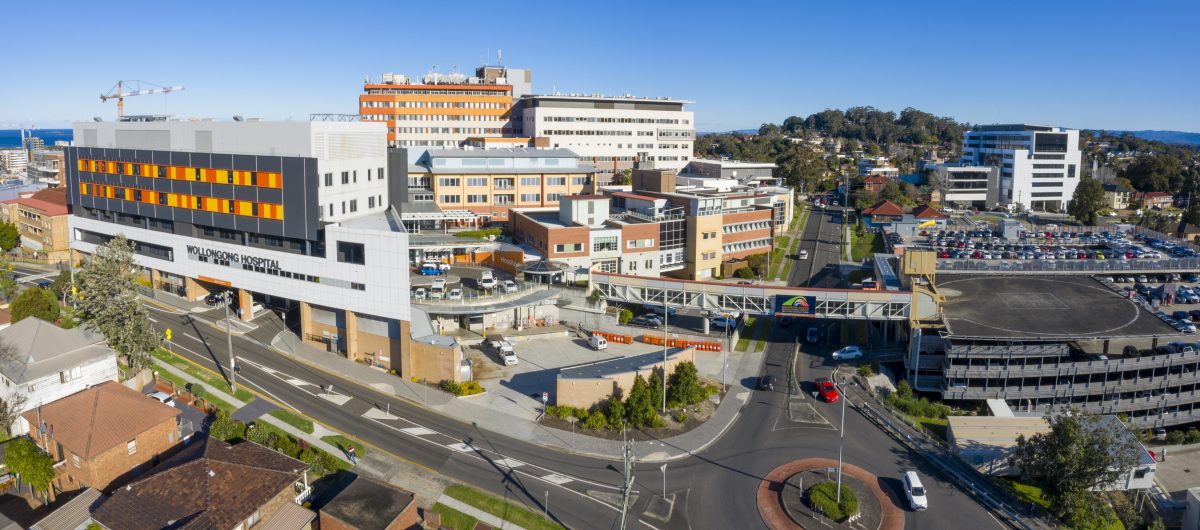
Wollongong Hospital Emergency Department is showing signs of improvement, but more than half of patients still aren’t leaving within four hours. Photo: Planning NSW.
Patients are being seen faster in local emergency departments (ED) and more are starting their treatment on time, but according to new figures, many are still spending extremely long hours in the EDs before they can be admitted or go home.
The Bureau of Health Information (BHI) has released its latest report into the performance of the state’s hospital system between April and June this year, and while there are some positive signs of recovery, it is clear there is still immense pressure on public health services in the Illawarra Shoalhaven Local Health District (ISLHD).
Emergency departments across the district dealt with 41,594 presentations across the three months, and although that is a five per cent drop on the same time last year, the number of ‘triage 2’, or emergency level presentations, was the highest the district had seen in 13 years since reporting began.
ISLHD Chief Executive Margot Mains said the district’s results had improved in some key areas.
“Despite the increase in more complex presentations, the majority of patients (61.3 per cent) started their treatment on time, an improvement of 4.8 percentage points when compared with the same quarter in 2022 (56.5 per cent),” Ms Mains said.
“Further, more than six in 10 patients (63.1 per cent) were transferred from ambulance to ED staff within the 30-minute benchmark time, an improvement of 5.9 percentage points when compared with the previous April – June 2022 quarter (57.2 per cent).”
But less than half of patients left the emergency departments within four hours, with only 39 per cent hitting that benchmark at Wollongong Hospital.
At Wollongong the median time before patients left emergency was four hours and 55 minutes, which was 18 minutes longer than the same time last year.
Those in the 90th percentile waited almost 19 hours.
And while the median time for patients to be treated and discharged was just more than four hours, those who were admitted or transferred to another hospital waited more than nine hours.
NSW Health Minister and Keira MP Ryan Park said despite some improvements, the State Government was battling with funding and staffing challenges left by the previous administration.
“We’ve inherited a health system facing great pressure and significant strain. I’ve always said there are no quick fixes, and it will take time to address these challenges,” Minister Park said.
“I want to make sure all people in NSW receive the right level of health care, service and access and have confidence in their hospital and health system.
“We are determined to begin rebuilding our state’s health system with a comprehensive and ambitious agenda,” he added.
Ms Mains said at a local level, the district would continue to focus on strengthened models of care and initiatives to sustain a positive trend in performance.
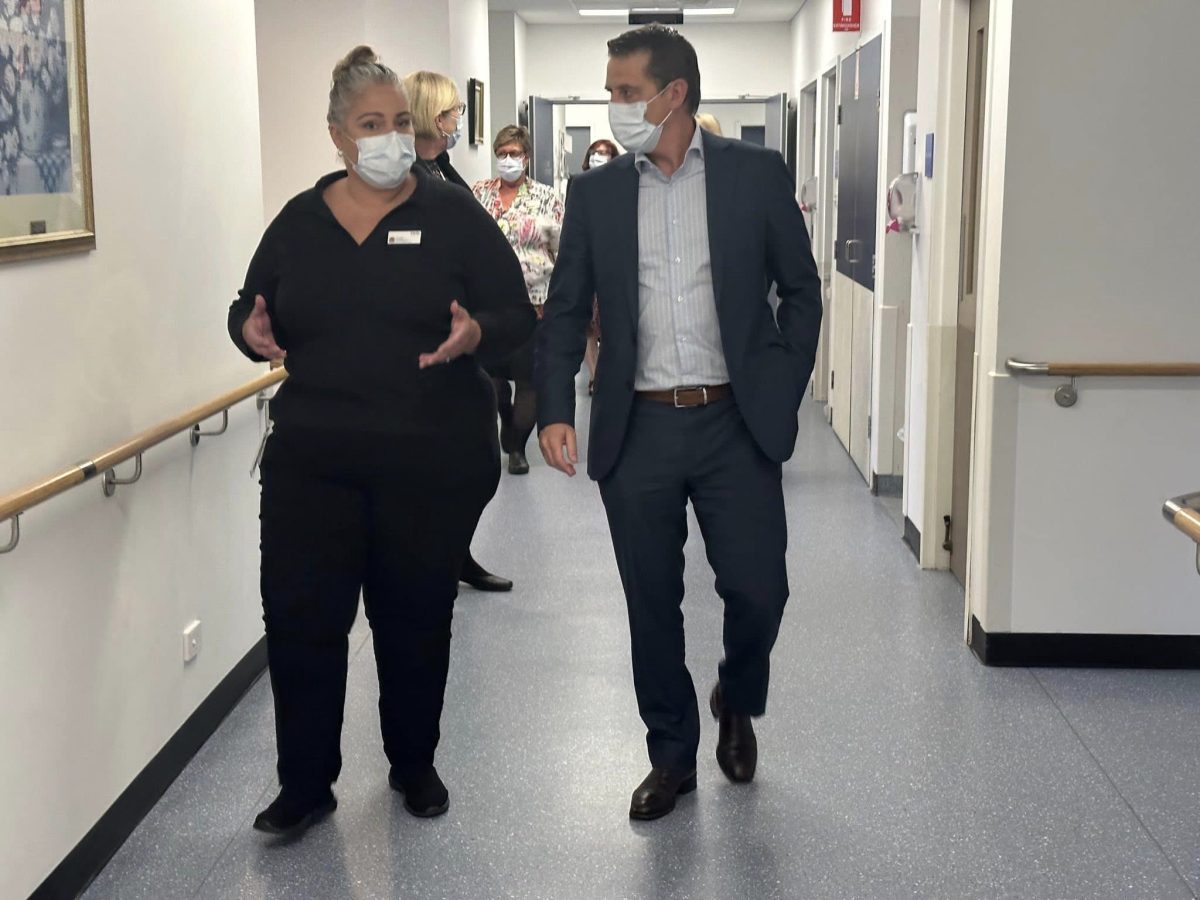
Health Minister Ryan Park said it would take time to address all the challenges in the hospital system. Photo: Supplied.
She said this included expanding the Bulli Urgent Care Centre to six days a week, launching the Aged Care Outreach Service for residents in aged care to reduce unnecessary trips to ED, and planning and recruitment for additional local Transitional Aged Care program beds to help discharge patients safely from hospital while they wait for a place at an aged care facility to become available.
The district is also set to continue ‘care virtual initiatives’, maximise operations within Emergency Short Stay Assessment Units, increase timeliness of patient discharge, utilise dedicated models of care for people experiencing mental health crises, such as those provided by Wollongong Safe Haven, The Mental Health Ambulance and Police Project, and the establishment of a Psychiatric Emergency Care Centre at Shellharbour Hospital.
Elective surgery is also an ongoing priority for the region since the waiting list reached record highs due to pandemic delays in 2020.
“A key focus for ISLHD is ensuring people on the planned surgery wait list whose surgeries are overdue receive their procedures as soon as possible,” Ms Mains said.
Three thousand three hundred and sixty-one surgeries were performed in the district last quarter, 178 more than in April to June 2022, but there were still 6319 on the waiting list at the end of the reporting period.
“Over a year, we have reduced that list by almost 60 per cent, with 403 people waiting longer than clinically recommended for a planned surgery at the end of June 2023, compared with 1004 at the end of June 2022,” Ms Mains said.
The wait time for non-urgent surgeries has dropped to 323 days and although that is significantly less than the previous year it could be plateauing, with figures from January to March showing a 322-day wait.
“Wollongong, Shellharbour and Shoalhaven Hospitals continue to maximise available theatre time and ongoing partnerships with local private facilities to undertake public planned surgery,” Ms Mains said.
More urgent surgeries are prioritised ahead of non-urgent procedures, so patients are urged to keep medical professionals informed if their symptoms or conditions change.
“As always, patients who feel their condition has deteriorated while waiting for their procedure are encouraged to contact their treating doctor for a clinical review and they can be placed in a higher urgency category if required,” Ms Mains said.









